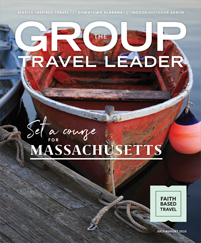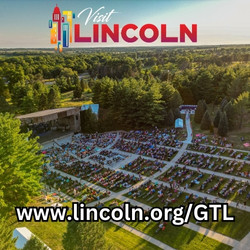Art often evokes feelings that words cannot.
Transcending the confines of museums and galleries, public art provokes thought and sparks dialogue, inviting viewers to engage and fostering a sense of shared experience and community identity. Around the country, sculptures, murals and other public art installations showcase the stories and the spirit of the Civil Rights Movement and inhumanity of Jim Crow segregation.
Launched in 2018, the U.S. Civil Rights Trail makes it easy for groups to visit more than 100 crucial civil rights sites across 15 states and the District of Columbia. Here are five places with civil rights artwork that will engage and educate viewers of all ages.
Daisy Bates Statue at the U.S. Capitol
Washington, D.C.
Born in Huttig, Arkansas, in 1914 and raised in a foster home after three white men killed her mother when she was 3 years old, Daisy Lee Gatson Bates was a tireless champion of the Civil Rights Movement. She and her husband, Lucious Christopher Barnes, settled in Little Rock and began publishing The Arkansas State Press, one of the only African American newspapers dedicated primarily to the Civil Rights Movement.
After the 1954 Brown v. Board of Education ruling, Bates became president of the Arkansas chapter of the NAACP, planning the strategy to integrate Arkansas’ schools. She personally selected nine students to integrate Central High School in 1957, often driving them to school and fighting to protect them from violent, jeering crowds. The Bates home was frequently the target of vandalism and violence, with shots fired through windows and crosses burned on the lawn.
She was the only woman to speak at the March on Washington for Jobs and Freedom in 1963, where more than 250,000 people gathered to demand an end to segregation and to stand up for other civil rights, and where Dr. Martin Luther King Jr. gave his iconic “I Have a Dream” speech from the steps of the Lincoln Memorial.
Daisy Bates was posthumously awarded the Medal of Freedom in 1999. In 2024, a bronze statue of her was added to the U.S. Capitol.
aoc.gov/explore-capitol-campus/art/daisy-bates-statue
‘Behold’ Monument at MLK National Historical Park
Atlanta
In 1980, President Jimmy Carter signed into law the bill creating the Martin Luther King Jr. National Historical Park in Atlanta. Ten years later, King’s widow, Coretta Scott King, unveiled the “Behold” monument as a tribute to her late husband and as an enduring inspiration to all who fight for dignity, justice and human rights.
With her at the dedication were actor John Amos (who played Kunta Kinte in the “Roots” mini-series) and sculptor Patrick Morelli, who said that the 10-foot bronze overlooking King’s tomb was inspired by the ancient African ritual of lifting a newborn child to the heavens and reciting the words “Behold the only thing greater than yourself.”
“I wanted the ‘Behold’ monument to glorify those aspects of Dr. King’s character that I felt distinguished him as a truly great man,” said Morelli. “The two aspects of Dr. King’s life and works that impressed me most were, first, his ability to defend a morally courageous — though often unpopular — cause in the face of seemingly overwhelming opposition, and second, his ability to maintain his dignity and a genuine spirit of brotherhood in the face of the cruelest and most ignorant threats, insults and indignities believing that the righteousness of his convictions and beliefs would prevail.”
The sculptor had the granite base of the monument inscribed with the words “Dedicated to the Memory of Dr. Martin Luther King Jr. for his moral courage and nobility of spirit.”
In addition to the monument, Dr. King’s tomb and boyhood home, the park’s 35 acres contain a fountain and flowers at the International World Peace Rose Garden, Ebenezer Baptist Church, and the King Center, which continues to spread the reverend’s nonviolent ministry.
‘I AM A MAN’ Plaza at Clayborn Temple
Memphis, Tennessee
Just south of Beale Street in Memphis, Tennessee, the stately Romanesque Revival church now known as Clayborn Temple was built in 1892 for the (all-white) congregation of Second Presbyterian. After being sold to the African Methodist Episcopal Church, the building became a cultural and political hub for the city’s African American community.
In 1968, Black sanitation workers in Memphis went on strike, protesting low wages, brutal hours and unsafe working conditions. Adult Black men were frequently referred to as “boy” in the Jim Crow South, and the striking workers carried protest signs — printed in the temple’s basement — bearing their new slogan: I am a man. The slogan came to represent the struggle of the working poor and racial inequality in Memphis and beyond. The strike brought Martin Luther King Jr. to Memphis, where he was assassinated on April 4, 1968.
Created by internationally recognized sculptor Cliff Garten, I AM A MAN Plaza features a centrally located bronze and stainless steel sculpture that brings the iconic slogan into the present. Historical and contemporary texts selected by the community are etched into the marble gates to the award-winning plaza’s entry. The texts combine as a meditation on America’s struggle and progress with racism and class inequity since the sanitation workers and King took their historic stand in Memphis.
‘Speaking Truth to Power’
Columbia, South Carolina
On Main Street in downtown Columbia, South Carolina, the Nickelodeon Theater now occupies the site of the former Fox Theatre, where student segregation protests took place in the 1960s. A public art installation, “Speaking Truth to Power,” commissioned by Columbia SC 63, stands in front of the Nickelodeon, commemorating those who contributed to the Civil Rights Movement in South Carolina.
The 2020 work stands eight feet tall with two interlocking bronze sheets depicting a collective of individuals coming together for the cause.
“It’s an abstract sculpture that was done by Jerome Meadows, a phenomenal artist based in Savannah,” said Bobby Donaldson, Columbia SC 63’s director, who is an associate professor of history and African American studies and also serves as executive director of the Center for Civil Rights History and Research at the University of South Carolina. “Initially it looks like two bronze slabs next to each other, but if you stand back, you will see the silhouettes of faces, more or less talking to each other. And that is where Mr. Meadows tries to sort of graphically showcase the efforts of students in downtown Columbia who were challenging segregation and racial discrimination.”
The sculpture is only one part of a curated walking tour through downtown Columbia.
“Our tour begins with the African American Monument on the grounds of our statehouse and moves from that through several blocks of Main Street,” said Donaldson. “Along the way, visitors learn about sit-ins and demonstrations, major lawsuits that went to the Supreme Court. They learn about a woman named Sarah Mae Flemming, who challenged bus segregation in downtown Columbia 17 months before Rosa Parks and how that incident led to a major legal ruling that was then used in the Rosa Parks case. The tour takes about 45 minutes if it’s a guided walking tour, but it can also be self-guided.”
Birmingham Civil Rights National Monument at Kelly Ingram Park
Birmingham, Alabama
Images from Birmingham in 1963 loom large in memories of the Civil Rights Movement.
Police dogs attacking nonviolent protesters. Children sprayed with high-pressure fire hoses. And four little girls — Addie Mae Collins, Carol Denise McNair, Cynthia Wesley and Carole Rosamond Robertson — killed when the Ku Klux Klan placed bombs at the 16th Street Baptist Church.
“The civil rights artwork in Birmingham really serves as a powerful reminder of the city’s pivotal role in the fight for justice,” said Sara Hamlin, vice president of tourism at the Greater Birmingham Convention and Visitors Bureau. “These artistic tributes offer individuals a meaningful journey through the struggles, triumph and encouraging legacy of the Civil Rights Movement. One is the ‘Four Spirits’ sculpture, which is a tribute to the four girls who were killed in 16th Street Baptist Church. The church also has a famous stained glass window that was donated by the people of Wales, showing a Black Christ with one hand pushing away hatred, and the other, extending forgiveness. Another sculpture depicts police dogs being unleashed on peaceful protesters. There are others in the park that memorialize the Children’s Crusade — children who faced arrest and abuse.”
Kelly Ingram Park is across from the 16th Street Baptist Church, two of the seven sites in the district that incorporate the National Monument. The Birmingham Civil Rights Institute is also part of the Birmingham Civil Rights National Monument and an affiliate of the Smithsonian Institution. Once among the most segregated cities in the nation, Birmingham now welcomes almost 4 million visitors a year — many drawn by its pivotal role in Civil Rights history.











